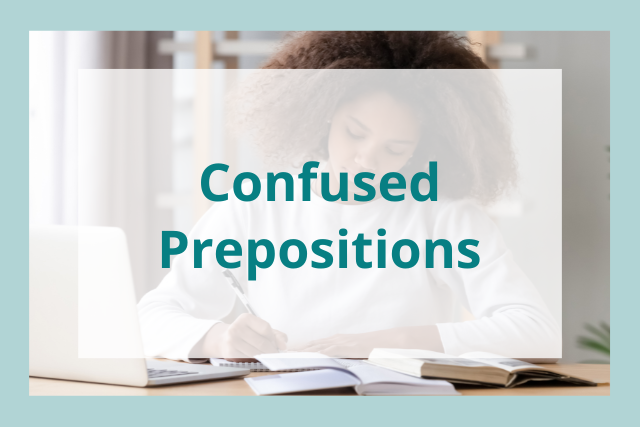
Prepositions are words that show a relationship between nouns or pronouns and other words or phrases in a sentence. The relationship is often one of location, time, direction, manner, or amount.
English has many prepositions, which makes them easy to confuse!
Common prepositions include to, on, for, at, in, and of. Each of these has specific uses and different meanings. It’s important to understand which prepositions to use in which situation.
Prepositions are used to show relationships between nouns and other words or phrases. They help explain the what, how, when, or where of a sentence or clause.
English has around 100 prepositions, although some of these are phrases that consist of two or three words. We’re going to focus on the most commonly confused prepositions.
The Prepositions To and From
To is one of the most common prepositions, and it has many uses. When to is linked to a verb (e.g. to read), this is called an infinitive.
To can show movement from one location to another or from one person to another. From is the starting location or person.
- He went to Los Angeles with his family.
- I gave the gift to my friend.
- She traveled from England to France.
- The letter was from my mom.
To can also show the passage of time. It’s often used with the preposition from to show duration.
- I have to work from nine to six.
The Preposition At
At is a preposition that describes location and time. Unlike to, it does not indicate movement or passage of time. Instead, it is a specific place or point in time.
- She is at school.
- The dog is at the vet.
- I have to work at six.
- I started college at age eighteen.
The Prepositions In and On
In and on are easily confused by non-native speakers because many other languages have only preposition to mean both. For location, in means something is inside something. On means something is on top of something, usually a flat surface.
- The dog is in its crate.
- The keys are on the table.
- She is in class.
But there are other uses of in and on that are confusing. People and things are in movies, books, and plays, but they are on television. Events happen on specific days, but they occur in months and years.
The PrepositionFor
For can describe the reason for something and be used like because of. It can show an amount of time and specify how something is used.
- I’m really sorry for your loss.
- We will be in Mississippi for the holidays.
- The device is used for laparoscopic surgery.
By and With
By and with both describe how something is done. By is what we do. With is what we use to do something. By can also mean near.
- You can mix the bread and make the dough stronger by kneading it.
- Knead it with your hands.
- The store is over by the lake.
The Prepoition Of
Of indicates relating or belonging to something, someone, or someplace. It can also specify a number or amount.
- I used to dream of becoming a writer.
- This is a painting of the twelve disciples.
- The pie calls for one teaspoon of vanilla.
